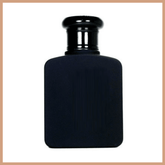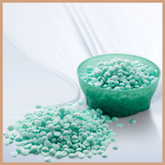How to Make Cold Process Soap: The Ultimate Guide for Beginners
Cold process soap making can appear extremely intimidating when you are new to the making process. With today's step by step guide, we are hoping to be able to show you just how achievable and satisfying this process is, even if you have absolutely no prior knowledge of how cold process soap is made.

This traditional soap making technique allows us to have complete control over our ingredients, making it possible to craft a soap using just natural, skin-loving ingredients.
This method of soap making has been used for centuries. The earliest recorded evidence of the production of soap-like material dates back to around 2800 BC., when soap was produced by heating a mixture of fats and wood ash.
Today, soap is produced by mixing fats and oils with an alkali solution (sodium hydroxide and water). Sodium hydroxide is also known as lye or caustic soda (NaOH).
The chemical reaction that occurs when fats/oils and sodium hydroxide are mixed together is called saponification. This reaction turns the oils and butters into soap.
Learning the Basics of Cold Process Soap Making

Many people first starting their journey into cold process soap making would love nothing more than to delve straight into creating pretty swirls and using difficult techniques. As soap makers ourselves, we know how tempting it can be to skip the basics to try your hand at these more advanced techniques!
The truth is, it can sometimes take many tries to achieve these desired looks and while it may seem very tempting to jump straight in with multiple colours and designs, it is always best to start with the basics. There is a lot to learn before and during the process of making your first cold process soap. Learning how to mix your lye solution, measuring, and melting your oils and butters, what temperatures to soap at and understanding what “trace” is are all a necessary part of this journey.
We would encourage you to get to the point where you feel confident about these basics before trying advanced techniques.
Working with Sodium Hydroxide (Lye)
For many, the thought of working with Sodium Hydroxide can be very daunting, but we are here today to reassure you that there is nothing to worry about as long as you have the correct PPE.
Protective equipment is paramount when working with lye and you need to protect yourself from splashes and spills that may occur. Safety goggles, disposable gloves and a well-ventilated area is a must and paper towels and/or old tea towels and an apron are strongly recommended to have on hand too.
Remember to always add sodium hydroxide to water and not the other way around. Doing so can cause a volcanic effect and you will be left with a caustic mess to deal with!
Mixing Sodium hydroxide with the water causes a heat reaction. The mixture will heat up extremely quickly and release strong fumes, therefore a well-ventilated area is needed.
Please note: If you get Sodium hydroxide on your skin, rinse well with cool water. For burns or eyes, rinse well and seek medical attention.
Choosing Oils and Butters for Cold Process Soap
Each butter and oil will have its own values in soap.
There are some fantastic soap calculators available online to help you formulate a recipe. These tools will help you see which values each oil or butter will bring to the finished bar. It will also calculate the water and sodium hydroxide needed for your recipe.
For our beginner’s tutorial, we’ve done the calculations for you, using a classic recipe of olive oil, coconut oil and palm oil.
Olive oil is known for its highly moisturising properties and gives the bar a silky feel. Coconut oil is known for its cleansing properties and produces a great lather and palm oil contributes to the hardness of the bar and also contributes to a lovely bubbly lather.
Temperatures for Cold Process Soap Making
The temperatures of both your oils and butters as well as your lye solution are important when making cold process soap.
Ideally, you need the lye solution and your melted butters/oils to both be around 48°C (120°F) before combining.
What is ‘Trace’ in Cold Process Soap Making?
The term “trace” is used to explain the point where the oils/butters and the lye solution have emulsified to the point where they will not separate. Once the batter has emulsified, it will start to thicken and continue to thicken. This is called at trace .
When you start to mix the lye solution with your oils/butters, you will notice that the mixture will start to look creamy. Emulsification is reached when you cannot see any more oil streaks within your soap batter. Reaching this stage is called light trace.
Light trace is the best time to add any fragrance and or colours as the mixture is thin and makes it easier to blend in the additives.
How Much Fragrance Should I Use for Cold Process Soap?
There are many factors to take into consideration when adding fragrance to cold process soap. You are able to fragrance your product with up to 3% of either fragrance oils or essential oils.
With cold process soap, the overall fragrance load is calculated a little differently to when using a melt & pour base. For melt and pour soap, the fragrance percentage is calculated from the overall weight of the base you are using. When making cold process soap, you will take the weight of the oils/butters and calculate the 3% load from this weight alone.*
For example, our recipe below calls for a total of 1000g of oils. 3% of 1000g grams is 30g (1000g x 0.03 = 30g). Remember to measure your fragrance oils in weight, not in millimetres. Why? Because millilitres are a volume measurement and not a weight measurement. Oils will often vary in viscosity (meaning some will be lighter and some heavier) so even at the same volume, you will find they will be different weights. To account for this, every ingredient in your recipe should use the same unit of measure – in this case, grams.
Can I Use Any Fragrance Oil in Cold Process Soap?
The most important thing is to check whether the oil you would like to use is skin safe . You can do this by checking the IFRA 49th Amendment document which is available for download on the fragrance product pages. Soap comes under Category 9 so if the IFRA documents for Category 9 states the safe usage as being 3% or higher, then you can use up to the full 3%. Remember, if the IFRA gives a percentage of more than 3%, we would still recommend not going over 3% for your cold process soap.
*For more experienced makers, you can take 10% of the water weight into consideration as well. But as this is a complete beginner’s guide, we have kept things as simple as possible.
Fragrance Oils in Cold Process Soap Making
You need to be aware that some fragrance oils and essential oils can cause your soap batter to misbehave. You may choose an oil that causes the batter to either seize (reach a thick trace very fast) or to rice (curdle, split, go lumpy).
In our tutorial below, we have used Jasmine Fragrance Oil. This oil gave us a very small amount of ricing (where it goes a bit lumpy) to start but continuing to blend until the batter goes smooth gave us excellent results.
Testing fragrances is extremely important when making cold process soap. Take records of each fragrance you test as you can then refer back to your notes at any time. Some fragrance oils may simply be unsuitable for use in soap and because of the infinite number of combinations that you can have, it is often a matter of trial and error to find a fragrance oil that works well with your batter.
Remember to add your fragrance oil at very light trace as this will give you more time to properly blend in your fragrance oils.
Can I Add Colouring to Cold Process Soap?
For our tutorial, we are making a lovely plain loaf. We will not be adding any colourings to keep things as simple and straightforward as possible.
Of course, you can colour your soap with lots of lovely natural ingredients including clays and botanicals as well as micas and pigments. We’ll cover these options in a future blog post.
Which Mould Should I Use for Cold Process Soap?
There are plenty of different loaf and single cell moulds that you can use with cold process soap. The main thing is that it just needs to be heat proof and that it can hold its form once soap has been poured into it. You don’t need to spend a lot of money on a mould, a lined carboard box does the job too. Lining a box with parchment/freezer paper will work just as well as any silicone lined mould.
For our tutorial, we have used a basic soap loaf mould - a silicone lined wooden loaf mould that holds approximately 1200g of soap.
Getting Creative with Cold Process Soap
Once you have learnt the basics of the cold process making method you can move on to more advanced techniques. There are so many ways you can customise your soaps, adding different colours, pouring patterns, using botanicals, trying different textures on top of your soaps, even piping the tops of your soaps!
How to Make Jasmine Scented Cold Process Soap

If you'd like to try making cold process soap for yourself, our tutorial will guide you through the process to make your own jasmine-scented soap with a textured top including decorative jasmine blossoms.
Difficulty Level: Beginner to Intermediate
Makes: 1 Loaf or approximately 9 bars of soap
Safety Equipment/PPE

- Safety goggles
- Disposable/rubber gloves
- Well-ventilated workspace
- Apron to protect clothing
- Paper towels and/or old cloths or tea towels
Equipment

- Weighing scales
- Stainless steel saucepan
- Mixing containers (stainless steel, plastic or Pyrex - nothing that contains aluminium)
- Stick blender
- Spatulas
- Stainless steel whisk (optional)
- Teaspoon for the textured top
- Digital thermometer
- Suitable mould
Ingredients

- 500g Refined olive oil *
- 310g Coconut oil
- 190g Palm oil
- 144g Sodium hydroxide (aka lye or caustic soda)
- 380g Water
- 30g Jasmine Fragrance Oil
- Dried jasmine flowers (to decorate)
* We’ve used refined olive oil in our recipe but bear in mind, it traces quite quickly. For a beginner, you may want to try using extra virgin olive oil instead which takes longer to trace, therefore giving you a bit more time to work with the soap batter.
Step 1 Prepare Your Ingredients

Wearing your protective gear and in a well vented area carefully weigh out 144g of Sodium hydroxide. Pop that to one side and weigh out 380g of water into a heat proof jug.
Very carefully pour your sodium hydroxide into your water. Remember to add the dry to the wet, never add wet to the dry as it can cause a volcanic effect.
Stir gently until the crystals have dissolved in the water and the water is clear.
As we stated above, you’ll notice the lye creates a heat reaction with the water and your solution will be hot. Set this down to one side to cool down. Whilst this is cooling, you’ll want to prepare your oils.

Weigh out your coconut, olive and palm oil and place all three oils into a stainless-steel saucepan. Melt on a very low heat until it's fully liquid. Be careful to not overheat or cook your oils.
Set aside and wait until both of the lye solution and oils are at around 48°C (120°F). As the lye will normally take a little longer to cool down to temperature, it’s always best to start with the lye first. If you find the oils cool a bit too quickly, you can reheat them gently to bring them back up to 48°C.
Step 2 Prepare Your Work Area

Whilst waiting for your oils and lye solution to cool, prepare your work area so you have everything to hand for when you start making.
Step 3 Mix the Lye Solution into the Oils

Once you have everything you will need to hand and your ingredients are at around 48°C (120°F), you can now start to mix the lye solution with the oils.
First, take your stick blender and place it into your melted oils. Tap the blender on the bottom of the jug a couple of times to release the air that may be trapped under the blender head.

Take your lye solution and carefully pour it into the oils.
Pulse the blender a couple of times to start the mixing. You will notice that the mixture will start to turn a creamy colour.

Continue pulsing the stick blender until the whole mixture is a creamy colour and you can no longer see any oil streaks within the mixture. At this point, you have reached emulsification / very light trace.
Step 4 Add Your Fragrance

It is now time to add the scent. Weigh out 30g of Jasmine fragrance oil and add this to your soap batter, mixing it in as you pour. Using your stick blender, thoroughly mix the fragrance oil into your soap batter.

The soap batter will now have reached full trace where it has continued to thicken but is still pourable.
This fragrance oil may appear to rice a little when first added to the soap batter but during testing, it caused no problem and it will mix out relatively quickly.
Step 5 Pour into the Mould

Take your soap mould and carefully pour in your soap batter.
Give the filled mould a couple of sharp knocks onto the work surface to knock out any air bubbles.
Step 6 Texture the Top

Take your teaspoon and using the back of the spoon push into the side of the soap batter and push up towards the middle of the soap. If the soap doesn’t hold its form, you will need to wait a little longer for the batter to set a bit more.

Continue using the spoon to create the texture along the whole side of the soap loaf.
Step 7 Place Your Dried Jasmine Buds

Take your Dried Jasmine buds and start placing them into the flat side of your soap.

You need a little of the stalk on the bud to poke into the soap (Pinching off any super long stalks)

Continue down the length of the soap until you reach the desired effect.
Step 8 Unmould and Slice

After 24 hours, you will be able to unmould your soap. Using a good kitchen knife, slice your soap into equal bars.
Once sliced, your soap bars will need to cure for 4-6 weeks before use.
If you're ready to get started making your own soaps, why not have a look at our selection of soap making products for your next project?








13 Comments
Hi there, I’m about to try this method, you mention that the soaps need to cure for 4-6 weeks? May I ask how and in what conditions. Do they need to be wrapped? Open in air environment etc etc. thank you.
Please let me know when you start doing cold process assessments
sir/madom….may i know pleace how can take caustic soda as per the fregrence wight…..shuld we take extra caustic soda for fregrence oil
Hi, Are you any closer to releasing a Assessment for Cold Process Soap ? Many thanks
Leave a comment
All blog comments are checked prior to publishing